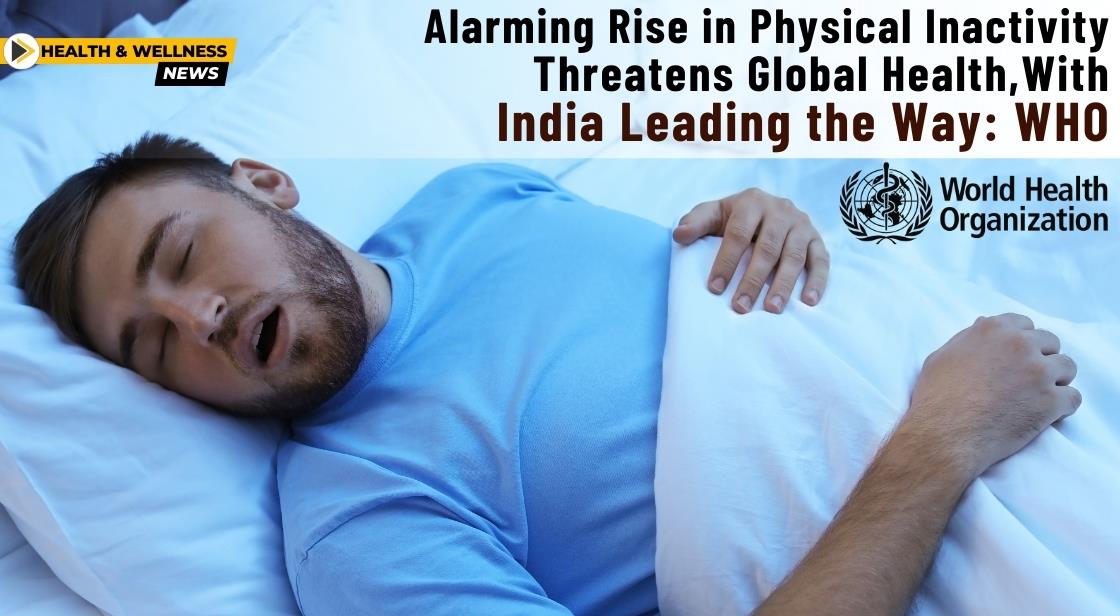Alarming Rise in Physical Inactivity Threatens Global Health, with India Leading the Way: WHO

News Synopsis
A concerning trend is emerging worldwide: physical inactivity is on the rise, particularly in specific regions like India. This lack of movement poses a significant threat to public health, raising concerns about the future of well-being.
Global Landscape of Physical Inactivity
Global Statistics:
Globally, 31% of adults do not meet the recommended levels of physical activity according to the World Health Organization (WHO). This translates to roughly 1.8 billion people worldwide who are not engaging in enough movement for optimal health.
Regional Disparities:
However, this number varies dramatically across regions. In India, a staggering 49.4% of adults are considered physically inactive. This is followed closely by Pakistan at 45.7%. Conversely, countries like Bhutan and Nepal boast significantly lower inactivity rates at 9.9% and 8.2%, respectively. These disparities highlight potential factors influencing physical activity levels, such as cultural norms, access to green spaces, and infrastructure for exercise.
Projections for India:
If current trends persist, India's inactivity rate is projected to climb to a worrying 59.9% by 2030. This substantial increase could lead to a surge in health problems associated with physical inactivity, placing a significant strain on healthcare systems.
High-Income Regions Most Affected:
Interestingly, the highest rates of physical inactivity are found in high-income regions of Asia Pacific (48%) and South Asia (45%). This may be due to factors like increasingly sedentary jobs, reliance on cars for transportation, and a growing emphasis on screen time over physical activity. Other regions show varying levels, ranging from 28% in high-income Western countries to a low of 14% in Oceania. These disparities necessitate targeted interventions that consider the specific socio-economic and cultural contexts of each region.
A Cause for Concern: Rising Inactivity Rates
-
Worrying Increase: Experts warn of a concerning rise in physical inactivity among adults. Data shows a five percentage point increase from 2010 to 2022. If this trend continues, global inactivity levels could reach 35% by 2030, jeopardizing the WHO's global target to reduce physical inactivity. This could have serious consequences for global health outcomes, leading to a rise in chronic diseases like heart disease, stroke, type 2 diabetes, and some cancers.
Combating Inactivity: Recommendations and Expert Opinions
WHO Recommendations:
The WHO recommends that adults engage in at least 150 minutes of moderate-intensity physical activity or 75 minutes of vigorous-intensity activity per week. This can include activities like walking, cycling, sports, active recreation, or even household chores. Regular physical activity is crucial for maintaining a healthy weight, reducing the risk of chronic diseases, improving mental health, and boosting overall well-being.
Renewed Commitment Needed:
Dr. Tedros Adhanom Ghebreyesus, WHO Director-General, emphasized the importance of renewed global commitment, stronger policies, and increased funding to combat this growing threat to health. Governments, public health organizations, and educational institutions need to work together to create environments that encourage physical activity for all age groups.
Addressing Gender and Age Disparities:
Women and older adults (over 60) are more likely to be inactive compared to their male and younger counterparts. Strategies to promote physical activity need to be tailored to address these specific needs and barriers. For example, initiatives that provide childcare during exercise sessions or create safe walking paths in neighborhoods can encourage women and older adults to become more active.
Call for Innovative Strategies:
Rudiger Krech, Director of Health Promotion at WHO, called for innovative strategies to make physical activity more accessible, affordable, and enjoyable for all demographics. This could involve promoting physical activity through gamification and digital tools, creating workplace wellness programs, and expanding access to public parks and recreational facilities. By making physical activity a more inviting and integrated part of daily life, we can encourage people of all ages and backgrounds to move more and improve their health.
Conclusion
The rise of physical inactivity is a global health crisis, with India facing a particularly concerning situation. To address this issue, a multi-pronged approach is needed. This includes renewed commitment from governments and health organizations, targeted interventions to address regional and demographic disparities, and innovative strategies to make physical activity more appealing and accessible to everyone. By working together, we can create a world where movement is celebrated and integrated into daily life, leading to a healthier and happier population.
You May Like









